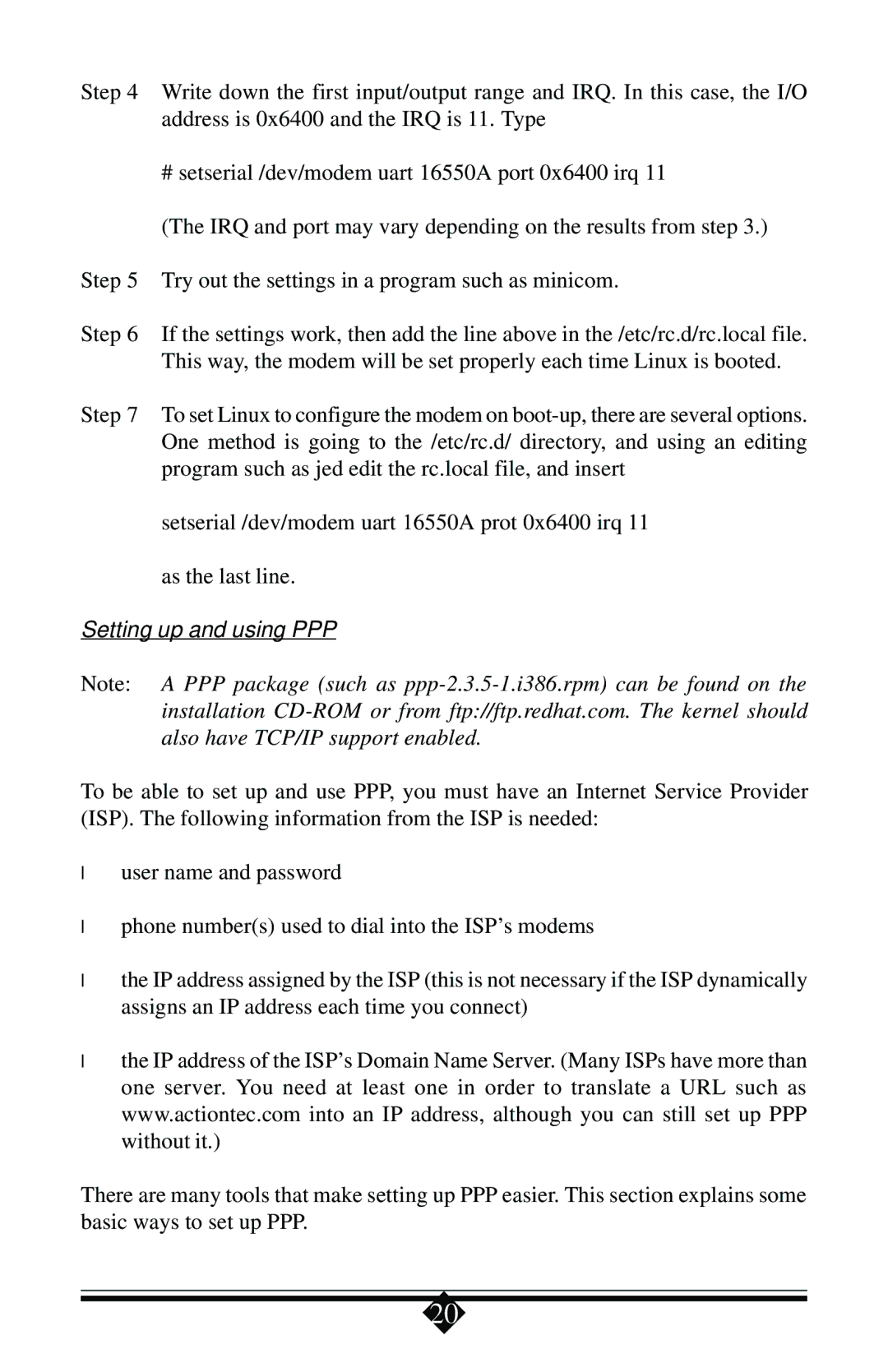Step 4 Write down the first input/output range and IRQ. In this case, the I/O address is 0x6400 and the IRQ is 11. Type
# setserial /dev/modem uart 16550A port 0x6400 irq 11
(The IRQ and port may vary depending on the results from step 3.)
Step 5 Try out the settings in a program such as minicom.
Step 6 If the settings work, then add the line above in the /etc/rc.d/rc.local file. This way, the modem will be set properly each time Linux is booted.
Step 7 To set Linux to configure the modem on
setserial /dev/modem uart 16550A prot 0x6400 irq 11
as the last line.
Setting up and using PPP
Note: A PPP package (such as
To be able to set up and use PPP, you must have an Internet Service Provider (ISP). The following information from the ISP is needed:
luser name and password
lphone number(s) used to dial into the ISP’s modems
lthe IP address assigned by the ISP (this is not necessary if the ISP dynamically assigns an IP address each time you connect)
lthe IP address of the ISP’s Domain Name Server. (Many ISPs have more than one server. You need at least one in order to translate a URL such as www.actiontec.com into an IP address, although you can still set up PPP without it.)
There are many tools that make setting up PPP easier. This section explains some basic ways to set up PPP.
20
